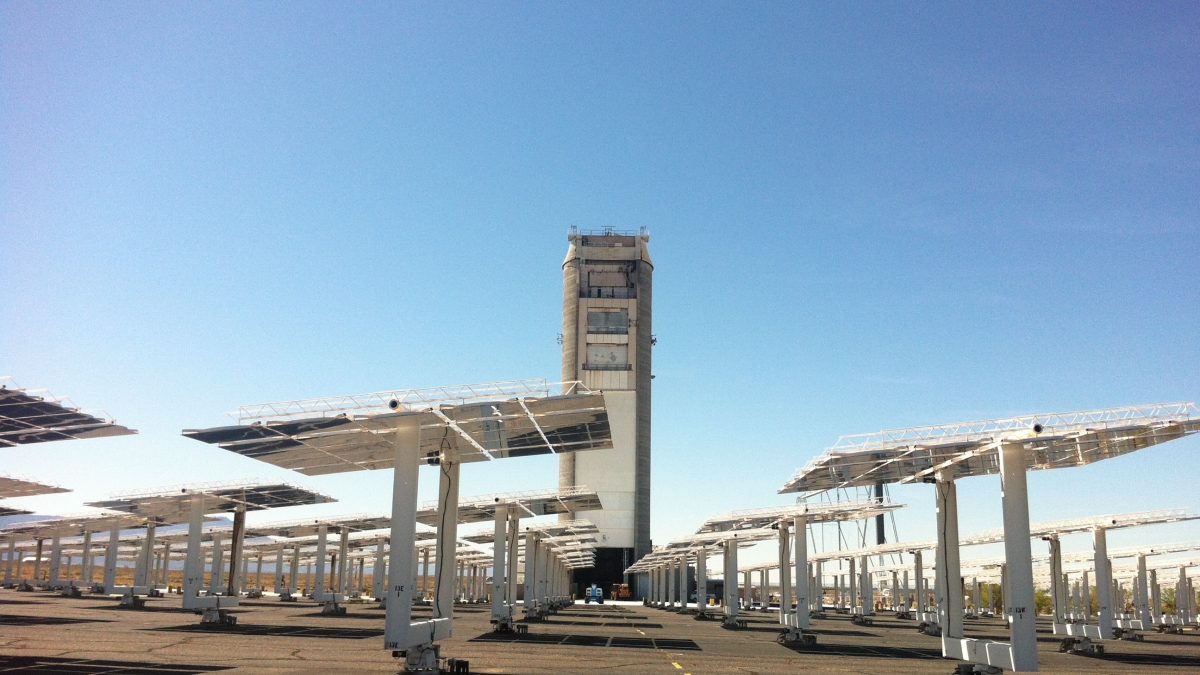ASU students experience cutting-edge technology at Sandia National Lab

In early April, a group of Arizona State University graduate students descended upon Sandia National Laboratory in Albuquerque, New Mexico, to engage with current energy leaders and interact with new energy technologies.
The ASU student group is part of the Integrative Graduate Education and Research Traineeship: Solar Utilization Network (IGERT SUN) program that seeks to train interdisciplinary doctoral students in a number of solar energy conversion areas to tackle next-generation, global energy challenges through a wide range of perspectives.
The students who toured Sandia's laboratories were impressed with the technology they were able to see and learn about while talking with Sandia officials.
"The energy technology that impressed me the most at Sandia was the 'Sunshine to Petrol' project," said chemistry and biochemistry doctoral student Joseph Laureanti. "The project utilizes a 2-3 story parabolic mirror that, basically, concentrates and focuses the solar irradiation to a small area to produce intense heat. The size of the parabolic dish was staggering, almost scary, but nonetheless, very cool."
Sandia offered a unique opportunity for students to tour the national lab, to get an up-close, hands-on view of Sandia’s multiple concentrated solar power and solar furnace technologies, as well as an inside look at research possibilities and resources available to national lab scientists and engineers, should they decide on a similar career path. The site visit also allowed Sandia to showcase some of its latest cutting-edge solar energy technologies, where students could witness the kinds of possibilities and potential research opportunities available to them upon graduation.
Sandia engineer, Charles Andraka, said he enjoyed the student interactions.
“The students appeared to be genuinely excited to be here and were very engaged in the various visits,” he said. “The whole team was appreciative of the exposure to the many Sandia technologies. We often have groups, students or otherwise, who are primarily engineers. The diversity of backgrounds added to the dynamic discussions.”
The IGERT SUN 2012 is the first six-student cohort to complete the five-year, $3 million National Science Foundation-funded program. The program requires six site visits as part of its coursework, and the site visits class is the final course in the two-year curriculum.
The goal is to create a series of students who seek to address a variety of interdisciplinary energy issues – from technology to policy to the social implications of human energy use – in shifting from a fossil fuel-based society to one based on sustainable, renewable energy sources. This is achieved through practical application experiences in real-world energy scenarios where commercial, government and national laboratory leaders are already facing these immediate challenges. The site visits currently span between a number of energy entities in Arizona and New Mexico.
The Arizona State University IGERT SUN program is just one of the ways ASU and Sandia are working together to confront renewable energy challenges. In August 2013, ASU and Sandia signed a memorandum of understanding to collaborate on energy research, build educational energy programs and workforce development, and inform better energy policy. The IGERT SUN student visit is just one component of advancing these shared institutional goals.
See more photos and interviews with students who toured Sandia National Laboratory on Research Matters.